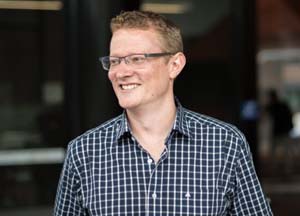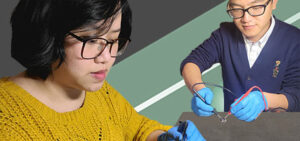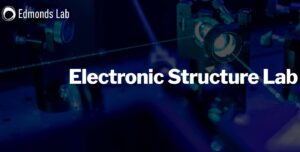
Mark Edmonds, ARC Future Fellow, Monash University

Michael Fuhrer, FLEET Director, Monash University
The Challenge
Scientists are continually searching for ways to increase computing power while reducing power consumption. A big step forward would be finding materials that conduct electrons with near-zero resistance at high-temperature and with all their spins aligned in one direction.
The Solution
Our solution is a layered “sandwich” structure comprising of a thin topological insulator that is placed between two single magnetic layers. This creates a bandgap, and within the bandgap the spin-aligned electrons travel along the edges of the material. The new system aims for a five-fold increase in the temperature at which zero-resistance currents are supported.
Key Benefits
- Demonstrated Bandgap
- High Magnetic Transition Temperature
- The structure can be made using growth techniques compatible with existing CMOS.
Development Stage
- Technology Concept completed
- In the process of seeking strategic partners to develop the concept.
Brief Description & Differentiation
The aim of this research is to ultimately achieve zero-resistance spin-polarized edge currents at or near room temperature. In other technologies, such zero-resistance edge currents are limited to cryogenic temperatures of just several Kelvin (or just above absolute zero). We envision a magnetic topological insulator ‘sandwich’ material that possesses a bandgap and magnetic transition temperature (where all the magnetic spins are aligned) large enough to support near- room-temperature operation.
Intellectual Property
N/A
Key Publications
- Li, Q et al, Large magnetic gap in a designer ferromagnet-topological insulator-ferromagnet heterostructure, Advanced Materials 2022, 2107520
- Trang, C. X et al, Crossover from 2D ferromagnetic insulator to wide band gap quantum anomalous Hall insulator in ultrathin MnBi2Te4, ACS Nano 2021, 15 (8), 13444–13452.
- Bhattacharyya, S. et al, Recent progress in proximity coupling of magnetism to topological insulators, Advanced Materials 2021,33 (33), 2007795
More information
- Contact Dr Mark Edmonds, Monash mark.edmonds@monash.edu
- Contact Prof Michael Fuhrer, Monash michael.fuhrer@monash.edu
- Visit the Edmonds Lab edmonds-research.com



